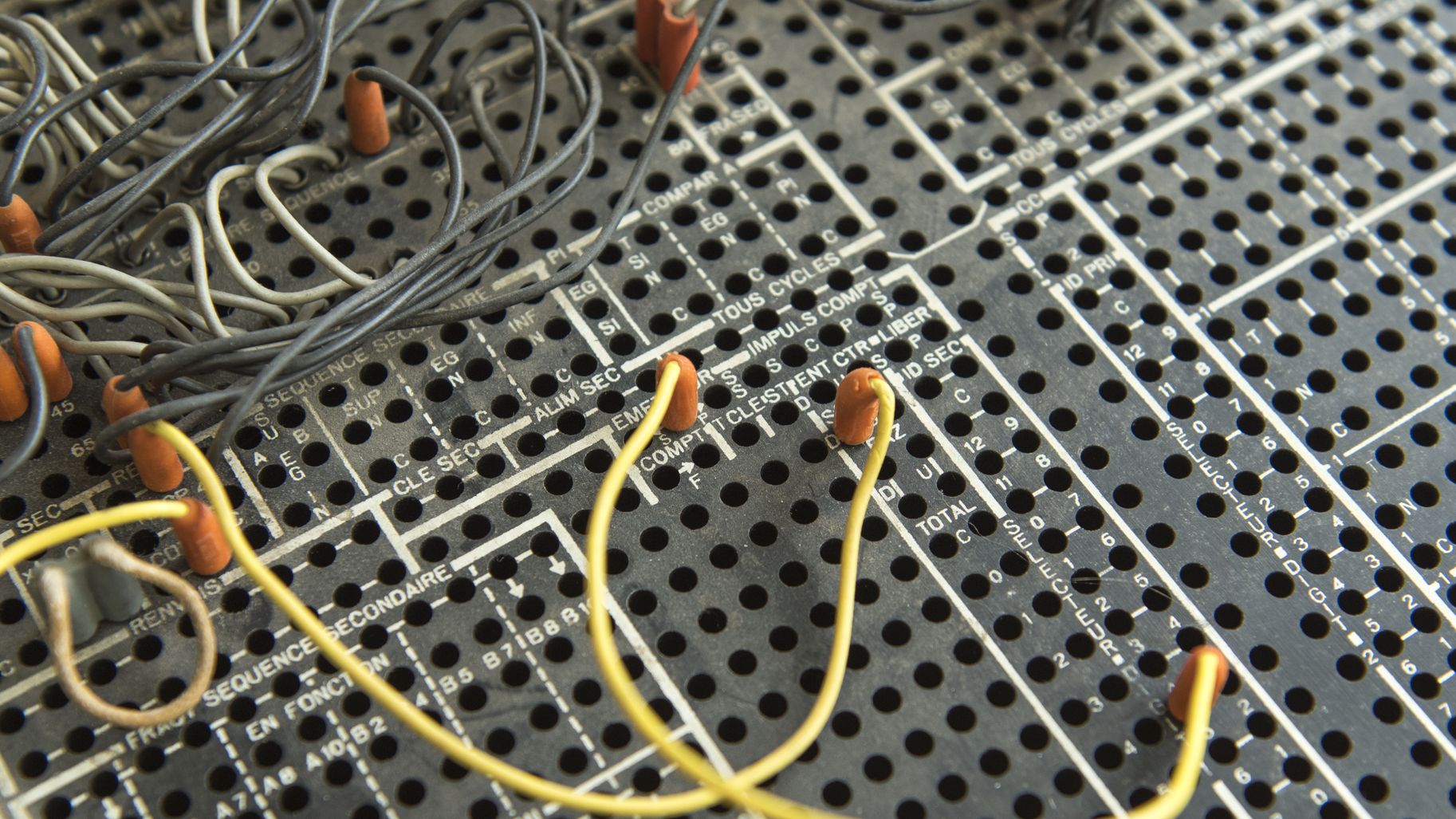
The adventure began last year during a brainstorming session organised by Inria's communications department on the celebration of the institute's 50th anniversary. “I suggested a retrospective exhibition and my idea was very well received”, Marie-Pierre Diquelou, head of document management and archives at the Delegation for Legal Affairs, sums up. The subject that was initially proposed was vast: illustrating Inria's contribution to the history of computer science. Too vast, no doubt. That was when Rémy Taillefer, knowledge manager in the Human Resources department, and Thierry Boche, from the Information Systems department, came in. The former is a colleague with a long experience in different functions at Inria, including within research teams; the latter has solid skills as an IT stock manager and a passion for Second World War history.
A two-fold story to tell
“The three of us started to reflect on it and, gradually, the project became more refined, Rémy Taillefer adds. Instead of a large fresco of computer science we opted for a more modest and heritage-based approach. We concentrated on the history of the Voluceau site - which, from 1952 to 1967, was a support site to NATO's Supreme Headquarters Allied Powers Europe (SHAPE) - as well as on the evolution of Inria's office equipment which, for five decades, was the privileged witness to the work of the researchers, some of whom made their mark on the history of computer science.”
Do-it-Yourself takes pride of place
Drawing on very complementary skills – “that interlocked as if by magic”, Marie-Pierre Diquelou underlines - the little team embarked on an original adventure, with great freedom but also, and above all, making do with what they had and using their free time. On the agenda: long hours spent searching in the storerooms, identifying the machines, hunting for the slightest piece of information on the Internet, sounding out researchers' memories, building up a collection of images and documents... but also numerous sessions spent designing and making noticeboards and the exhibition set. “Everything is home-made, down to the last detail, such as the anti-glare device we invented using paper tablecloths”, says Thierry Boche with a smile – and who still remembers the evenings spent moving heavy shelves from the library where the exhibition was set up, in order to come up with a meeting area.
Five eras, five atmospheres...
The latter takes its inspiration from the ‘period rooms’ proposed by the major museums in order to facilitate the appropriation of complex content. “We decided to structure the tour around reconstitutions of typical offices, representative of the different pivotal periods in the life of the site and the evolution of computer science”, Marie-Pierre Diquelou explains. “So visitors discover a first area devoted to the NATO period, with a military desk equipped with historical objects from our personal collections”, Thierry Boche continues. A second universe features the IRIA period (1967-1979) and presents the transition from mechanical office equipment to computers. The following rooms recount the advances in personal computing and Macs (1980s), work in networks, telecommunications and the Web (1990s) and, finally, the convergence of the technologies from the 2000s onwards.
A return to the past that has a bright future...
However it was all worthwhile: when the “From SHAPE to the inventors of digital technology” exhibition was inaugurated in November 2017, it received an enthusiastic reception. Visitor numbers increased from one guided tour to the next, until it reached the milestone of 1,000 visitors in the wake of the 2018 French Heritage Days, which allowed the general public to in turn discover the saga of the Rocquencourt site. “We also had the great pleasure of welcoming some very high-profile guests, such as the Internet pioneer Louis Pouzin and Najah Naffah, father of the Kayak project, which was managed by Inria at the start of the 1980s with a view to imagining the office of the future”, Rémy Taillefer continues.
Proud of the work accomplished - and of the Inria award that recognises its initiative - this little team does not intend to stop there. “We would now like to perpetuate this exhibition and, above all, make it more professional and enhance it, so that we can welcome new publics, contribute even further to Inria's influence and - why not - make it available for research team activities”, Marie-Pierre Diquelou concludes.